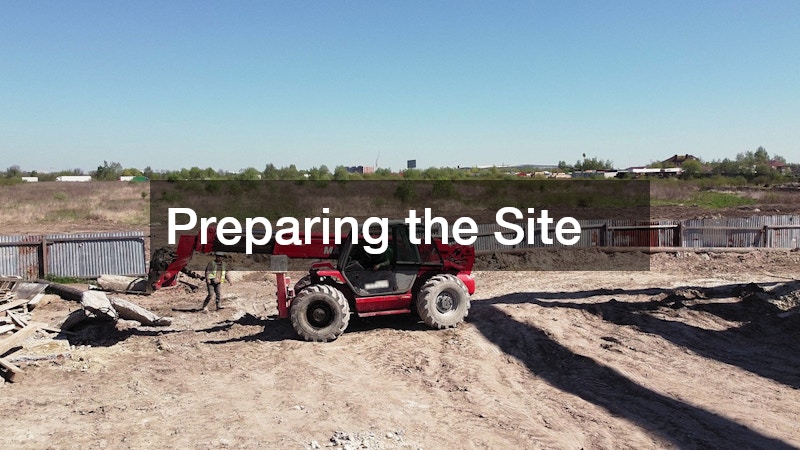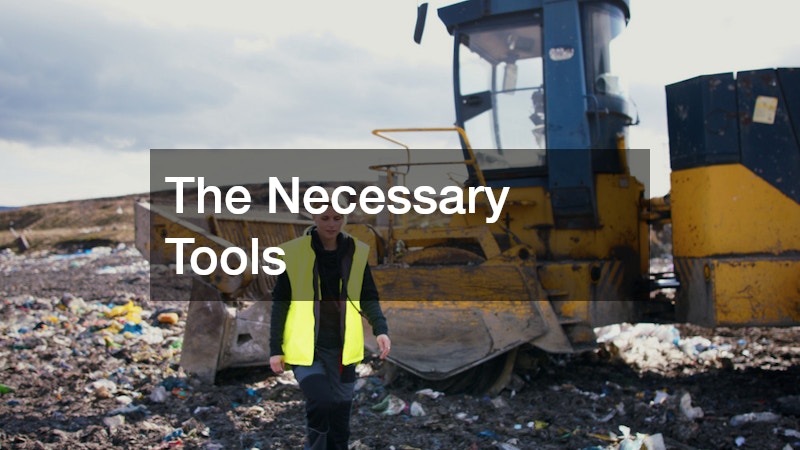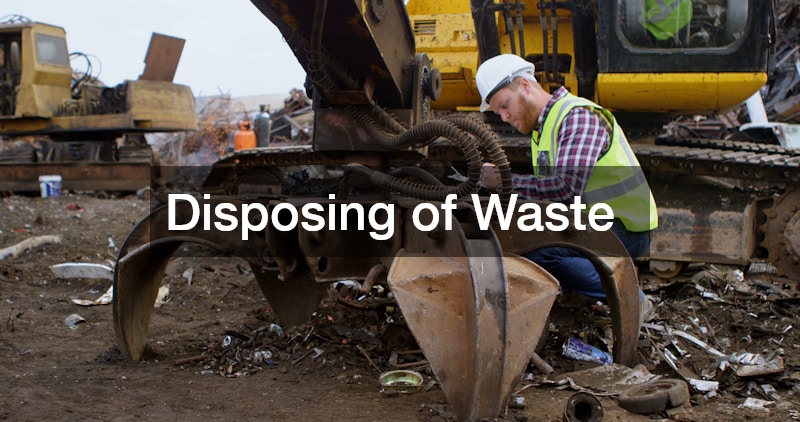Clearing the Way
Launching a new business can be exhilarating, but before the first brick is laid or a single nail is hammered, entrepreneurs must first face the challenge of site preparation. This initial stage often involves dealing with the remnants of old buildings, hazardous materials, or overgrown lots. Site demolition is the literal and figurative clean slate upon which a business’s future success is built.
Clearing a site isn’t just about demolition. It’s about strategy, foresight, and a willingness to deal with complexity. From environmental regulations to zoning laws and waste disposal logistics, entrepreneurs must be prepared to manage multiple moving parts before they can even begin construction. A well-cleared site ensures safety, compliance, and efficiency down the road.
One of the most significant advantages of investing in an older or neglected property is the price. Affordable industrial land can offer long-term savings, but that price often comes with a catch: extensive cleanup is usually needed. These sites may have hidden environmental or structural issues that only surface during the early phases of demolition.
However, for the ambitious business owner, these properties offer more than just cost savings—they offer potential. With the right team, tools, and planning, what was once a blighted or forgotten space can be transformed into a thriving commercial hub. It’s a process that requires resilience, but it can lead to extraordinary results.
The Safety Check
Safety is the first non-negotiable in any site demolition. When dealing with older buildings, a black mold inspection should be conducted before any demolition begins. Mold spores can spread quickly once disturbed, creating serious health risks for workers and potential legal liabilities for the property owner. If mold is found, it needs to be remediated by licensed professionals using industrial-grade cleaning agents and containment protocols. Skipping this step can contaminate equipment and lead to costly shutdowns. It’s a silent hazard that too many overlook until it’s too late.
Another important safety component is assessing the structural integrity of the buildings scheduled for demolition. Weak roofs, deteriorating foundations, or rotting timber can lead to sudden collapses. A site demolition expert will know what to look for and how to bring structures down methodically and safely. In addition to physical hazards, the site must be checked for environmental risks. These may include lead paint, asbestos, underground tanks, or contaminated soil. A Phase I Environmental Site Assessment (ESA) is often required to identify such risks before any work begins.
Every contractor and worker must have appropriate site demolition safety training. Personal protective equipment (PPE), first aid stations, and emergency response plans are all part of responsible site management. Prioritizing safety minimizes liability and builds trust with investors and regulators. When safety is the foundation of your site clearance strategy, everything else follows more smoothly. It reduces surprises, controls costs, and protects the health and welfare of everyone involved in the project.
Preparing the Site

Once the safety checks are completed, it’s time to begin transforming the land. This starts with hiring a reliable land clearing service to remove trees, brush, and any vegetation impeding access or construction. These services use specialized equipment that allows them to work quickly and minimize disruption to the surrounding area. Land clearing involves more than simply cutting down foliage. It includes stump grinding, brush removal, and sometimes even draining wetland areas. All this work helps stabilize the ground and make the site suitable for grading and building. Following vegetation removal, site demolition resumes. Old infrastructure—such as defunct parking lots, abandoned outbuildings, or outdated utility lines—must be removed. This part of the process often requires breaking up concrete, dismantling piping, and hauling away unusable materials.
Preparation also includes leveling the land, often through grading, and ensuring proper water drainage. Without this, your future structure could face flooding or foundation issues. Drainage considerations should be built into the site’s long-term layout to minimize maintenance headaches later. Access roads may also need to be created for construction vehicles and delivery trucks. This requires additional planning and coordination, especially on urban lots where space is tight or access is restricted. The smoother the access, the faster and safer the build-out. In the end, a properly prepared site allows builders and developers to work with confidence. It lays the groundwork—literally and metaphorically—for a successful commercial project with fewer surprises and more control.
Clearing the Way
Reliable tree removal services are essential when large or hazardous trees stand in the way of site demolition. Even seemingly healthy trees can pose risks to construction equipment or future infrastructure. Professional removal ensures safety and environmental compliance. Tree removal is more complicated than cutting and hauling. Arborists often need to assess root systems, especially if they’re entangled with underground utilities. Removing stumps and ensuring that roots don’t regrow or damage pavement later is just as important.
Site demolition efforts should be synchronized with tree removal to optimize labor and equipment use. This can include removing fences, sheds, or old signage—basically anything that doesn’t serve your new vision. Sometimes, valuable lumber or materials can be salvaged during tree removal or demolition. These can be sold or repurposed, offsetting some costs. Partnering with eco-conscious contractors helps minimize environmental impact and supports sustainability goals.
Dust control is also crucial during site demolition and clearing. Water trucks, barriers, and even tree buffers can be used to minimize dust from spreading to neighboring properties, which is particularly important in residential or urban areas. The combined efforts of demolition and clearing reveal the true shape and possibilities of your site. Once visual obstructions are gone, your team can see how best to design and place new buildings, parking, and access points.
The Necessary Tools

Heavy equipment plays a major role in site demolition. Renting compaction equipment helps ensure that the ground is firm and stable, which is vital before laying foundations or paving. Poorly compacted soil can lead to uneven settling, water accumulation, and even foundation failure. With the right compaction equipment rental, you can meet engineering standards, minimize voids, and ensure long-term structural integrity. Whether you’re prepping for a warehouse slab or a commercial parking lot, the compaction process can’t be overlooked. Site demolition tools such as backhoes, excavators, and hydraulic breakers may also be rented or subcontracted, depending on the scope of the work. Partnering with a provider that offers equipment delivery and maintenance support can save time and money.
Using the right equipment at the right time also improves safety. It reduces manual labor, minimizes injury risk, and improves efficiency. Knowing when to rent versus when to outsource is part of effective project management. In addition to large machinery, smaller tools like jackhammers, generators, and lighting towers will be needed for detailed work or off-hours operations. Keeping a well-organized inventory prevents work stoppages and boosts productivity. Ultimately, having the necessary tools at your disposal ensures that each phase of demolition and prep work proceeds without avoidable delays.
Managing the Crew
A skilled and supported workforce is vital to successful site clearance. Providing essentials such as a portable toilet ensures that basic needs are met without taking workers off-site, which increases productivity and morale. In remote or semi-rural locations, portable sanitation may be the only option. It must be well-maintained and regularly serviced to ensure hygiene and safety. This also helps meet OSHA and health department regulations. Beyond basic facilities, break areas, hydration stations, and shelter from the elements should be considered..
Daily safety meetings, task briefings, and site walk-throughs help align everyone’s efforts. It fosters a sense of professionalism and shared responsibility. Crew leaders should be trained in first aid and emergency procedures. Managing labor efficiently also means having a clear chain of command. Clear roles, communication protocols, and shift schedules prevent confusion and ensure accountability across the project. When site demolition crews are well-managed and cared for, they work better. Morale remains high, problems are caught early, and your site clearance proceeds efficiently and safely.
Disposing of Waste

Demolition and clearing generate massive amounts of waste—brick, metal, wood, concrete, insulation, and more. Coordinating with a scrap yard helps manage recyclables while keeping your site clean and organized. Scrap yards can often pay for valuable metals such as copper, steel, or aluminum. Sorting these materials on-site before transport adds value and reduces landfill waste. This not only saves on dumping fees but also supports environmental sustainability. Concrete and asphalt can often be crushed and reused as base layers for roads or parking lots. Partnering with a company that specializes in recycling construction waste gives you more options and helps earn green building certifications.
Roll-off dumpsters and regular hauling schedules are essential for keeping debris manageable. Accumulated waste can become a fire hazard, impede vehicle access, and reduce worker morale. Documentation of waste disposal is also important, particularly if you’re applying for permits, green credits, or funding. Keep records of where materials went and what was recycled to stay compliant with local regulations. A disciplined approach to waste management reflects a professional operation. It also keeps your neighbors and regulatory agencies happy, making future phases of the project easier to manage.
Maintaining the Site
Cleared sites need upkeep to remain usable while awaiting construction. A reliable business mower is useful for keeping grass and weeds under control, especially during long delays between demolition and building. Overgrown lots can invite pests, attract illegal dumping, and create a negative perception of your business. Regular mowing keeps the site presentable and reduces fire hazards during dry seasons.
Maintaining access roads, signage, and temporary fencing is equally important. Keeping the site orderly improves safety and ensures that deliveries or inspections can continue uninterrupted. An actively maintained site demonstrates commitment to the project and reassures investors and regulators that progress is ongoing, even during dormant phases.
Keeping Warm

When working through cold seasons, reliable heating oil deliveries become essential. Construction teams often need warm break areas, and materials like adhesives or coatings may require specific temperature ranges to function properly. Heating is also critical for drying out moisture-sensitive areas after demolition. Damp conditions can delay construction and promote mold growth. A well-heated environment helps control humidity and accelerates drying.
Temporary heating systems can be connected to portable shelters or trailers used as job site offices. These areas often house blueprints, documents, and sensitive electronics that require a stable climate. Fuel deliveries should be scheduled to match weather patterns and usage forecasts. Running out of heating oil mid-project can stall progress and create unsafe conditions. Safety precautions, such as carbon monoxide detectors and proper ventilation, are a must when using combustion-based heaters on-site. A professional setup minimizes risks while maximizing comfort.
To Demolish or Rebuild
When a site has suffered damage—especially from fire or structural failure—it’s important to consider whether full demolition or restoration is the better path. This decision requires a professional assessment from a qualified fire restoration company. Restoration firms can inspect buildings to determine whether parts of the structure, such as steel framing or concrete footings, can be salvaged. This can significantly cut down on costs and project timelines.
However, rebuilding requires a deep understanding of structural integrity, code compliance, and long-term safety. In some cases, restoring a building may cost more than tearing it down and starting over. Fire-damaged buildings often harbor unseen issues like toxic residue, hidden mold, or compromised wiring. Restoration specialists use advanced testing tools to assess and document these risks. If demolition is chosen, documentation from the restoration company may still be required for insurance claims, environmental reports, or legal compliance. Their insights help ensure a smooth transition between demolition and rebuilding phases.
The March of Progress
Clearing a site for new business is a detailed, multi-stage process involving everything from mold inspections and tree removal to waste disposal and crew management. Each phase has its unique challenges, but together they form the blueprint for a successful transformation.
While the effort and coordination required can be significant, the long-term payoff is well worth it. A clean, safe, and stable site becomes fertile ground for business growth and operational success. More than just a means to an end, site clearance can be a force for local revitalization. It turns underused or unsafe properties into economic engines that provide jobs, services, and renewed hope for communities.

